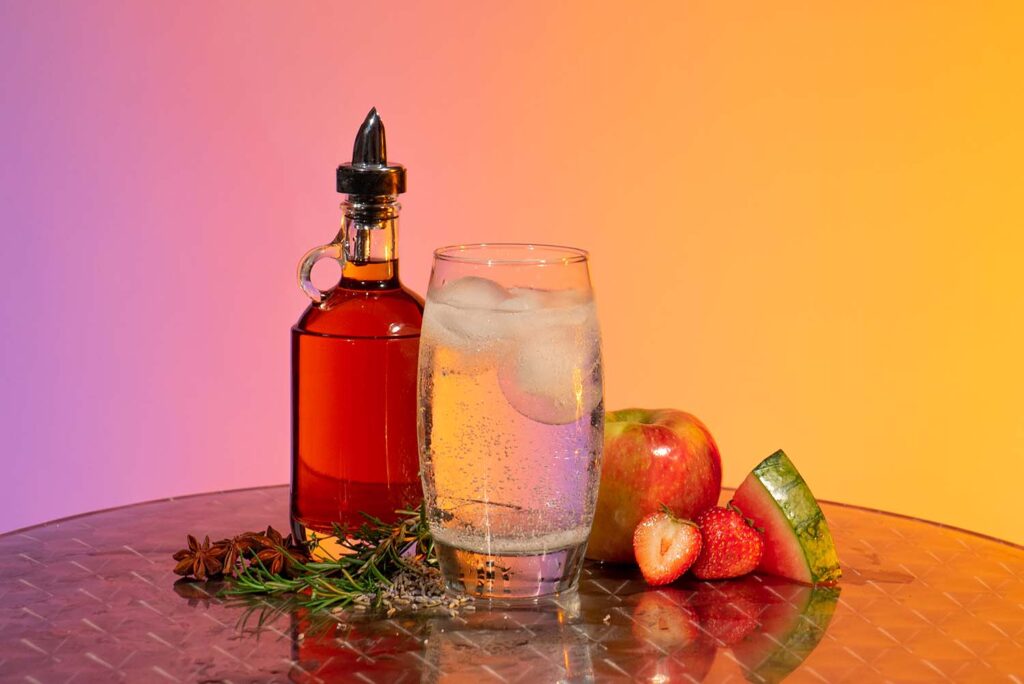
Experts at the Louisville, Kentucky-based beverage development company, Flavorman, have announced the drink trends to watch for in 2022. Driven by the long-term effects of an ongoing pandemic, this year’s forecast is shaping up to focus on celebrating life’s simple pleasures while striving for balance.
• Going Big & Bold: As evidenced by the seltzer boom of the last few years, drinks with subtle displays of flavor have previously taken center stage, but that is likely to change in 2022. With the seltzer market beginning to saturate, beverage makers are now seeking ways to differentiate from the competition, opting for bigger and bolder profiles.
“Client requests have taken a 180-degree turn on flavor, especially where seltzers and sparkling waters are concerned,” said Tom Gibson, Flavorman’s chief flavorist, in a press release. “Whereas before, clients would be looking for a gentler spritz of nuanced flavors in their drink, we are now seeing more clients ask for loud and proud, single-note flavors.”
In the wake of COVID-19 – a virus that is notorious for attacking a person’s taste and smell – it makes sense that drinks with prominently featured and straightforward flavors may provide reassurance to consumers still recovering from sensory loss related to the virus, or those who are just concerned with changes to their senses in general.
In 2022, expect beverage makers to continue emphasizing the presence of familiar flavors in drinks across categories. Childhood favorites like watermelon, strawberry, cherry, apple and grape will see a resurgence as consumers reach for those immediately recognizable and nostalgic profiles.
• Guilt-Free Indulgence: As the world becomes more accustomed to the challenges of an ongoing pandemic, consumers are learning to strive for balance in all aspects of their life. Rather than sacrificing on indulgent experiences, consumers are embracing them with some slight modifications.
Citrus flavors have been a cornerstone for the drinks industry, but consumer tastes are now evolving towards botanical-forward beverages—particularly in the premium sector. Floral profiles like hibiscus, lavender and elderflower are becoming more mainstream and making way for the earthier, more herbal flavors of turmeric, anise and rosemary.
“Many of the ingredients you would find in your kitchen spice cabinet can introduce an extra element to a drink, providing new dimensions of flavor or functionality,” said Katie Clark, Flavorman’s lab manager. “Consumers tend to react to these twists with greater expectations—an insight that brands can leverage in premium beverage offers.”
Because premium is also so often associated with quality, ingredients like juice and full sugar are also becoming more popular in beverages marketed as high-end. Consumers indulging in these drinks aren’t as concerned with calorie restrictions or sugar because they recognize that they are treating themselves to a unique experience. The same can be observed in the spirits and beverage alcohol sectors.
“In the spirits world, amaro, absinthe and other botanical spirits are seeing a renaissance,” said Colin Blake, director of spirits education at Moonshine University, the sister company of the Flavorman Beverage Campus. “These drinks tend to have a distinctive quality due to their balance of bitter and sweet, and they are consumed in very particular ways, usually before or directly following a meal. Consumers in the premium sector have embraced the ritual involved as another way of replicating a bar experience.”
• A Return to Simplicity: Simplicity provides a source of comfort during a time when life feels like it has become much more complicated. In fact, the ongoing “clean label” trend shows us how the quality of ingredients, not quantity, is shaping consumer perceptions of the value of a beverage. It also explains why drinks with simple ingredient statements continue to be consumer favorites.
“Transparency has, time and time again, proven to be important to consumers,” said Clark. “Many clients seeking compliance with Whole Foods, Trader Joe’s and other ‘better-for-you’ food and beverage retailers have simply opted to do away with sweeteners or added colors instead of combing through the accepted ingredient lists. Consumers don’t seem to mind.”
With health and wellness continuing to drive trends as we move into 2022, beverage brands will opt for simplicity in beverage formulations across the board. In the spirits sector, simplicity takes the form of moderation.
“Going low- or no-alcohol is a lifestyle choice that some consumers are rallying behind as a way to achieve holistic health goals,” said Clark. “This trend has fueled explosive growth in non-alcoholic spirits and ready-to-drink mocktails—as well as lower ABV wine-based cocktails—that we expect to continue into the New Year.”
With nearly 30 years in the beverage business and over 70,000 drink formulations, Flavorman compiles this annual trends summary through examination of beverage projects that have passed through its laboratory over the last 12 months. To learn more, visit flavorman.com.


